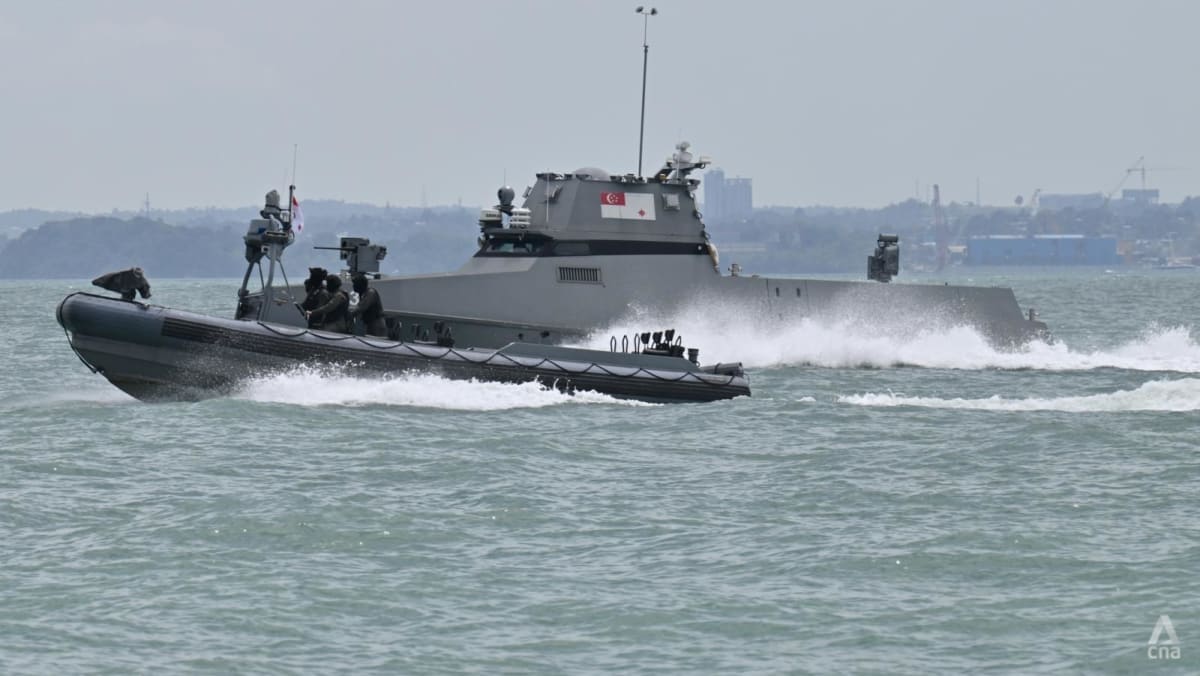SINGAPORE: “Stop, Stop, Stop”. A warning rang out from an unmanned surface vessel as it sailed towards and intercepted a “suspicious” boat in Singapore waters.
The audio warning, translated from text to speech, is part of the vessel’s calibrated response to situations at sea.
Known as Maritime Security Unmanned Surface Vessels or MARSEC USVs, these Republic of Singapore Navy (RSN) assets began operational patrols in January.
When required, these assets will also investigate and interdict suspicious vessels, the Ministry of Defence (MINDEF) said in a fact sheet on Tuesday (Feb 4).
Members of the media got to experience sailing on a USV while witnessing how it reacts to such vessels during a simulated maritime threat scenario near Changi Naval Base in Tanah Merah.
Each vessel is 16.9m-long and can travel at a speed of more than 25 knots or about 50kmh. It also has an endurance level – the maximum time a vessel can operate without needing supplies or maintenance – of more than 36 hours.
It is able to conduct autonomous navigation, with the help of a radar and 360-degree camera.
The USV also has a remote weapon system that can be used to fire warning or disabling shots when necessary. However, this system is not autonomous.
Directing the weapon system is an action that would require a “man in the loop” as it involves “deliberate human decision”, said commanding officer for the USV squadron Lieutenant Colonel Tan Kailing.
Speaking to reporters, Colonel (COL) Thung Yee Meng, commander of the sixth Flotilla fleet, said the MARSEC USVs are “a first” for the Singapore navy in terms of the autonomy they incorporate.
He also said that the navy’s development in unmanned technology underscores its commitment to innovation to meet operational efficiencies.
The RSN has acquired four MARSEC USVs and has been receiving them progressively. Three of the vessels had been delivered by the end of 2024, he added.
